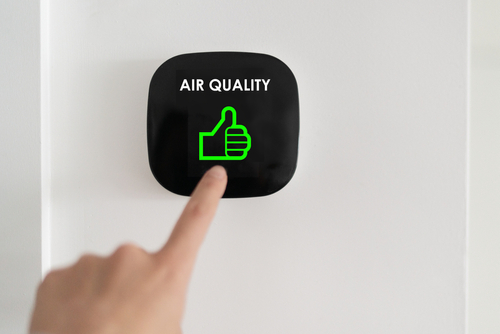EPA Funds $34M to Improve Indoor Air Quality at Schools
The U.S. Environmental Protection Agency (EPA) has selected five groups to receive $34 million in grants for projects helping address indoor air pollution in K-12 schools in low-income, disadvantaged, and Tribal communities across the country. This announcement comes after the agency revealed $26 million in funding to protect children from lead in drinking water at schools and childcare facilities.

Importance of IAQ
Approximately one-sixth of the U.S. population attends or works in roughly 130,000 schools around the country, and half of all K-12 students attend schools that do not have indoor air quality (IAQ) management plans or programs in place.
According to the EPA, air quality in schools is of particular concern because children’s developing organ systems are often more sensitive to environmental stressors, and children are frequently more heavily exposed to toxic substances in the environment than are adults. Children breathe more air in proportion to their body weight than adults.
There is substantial evidence that comprehensive management of IAQ in schools improves student academic performance and attendance, reduces the spread of airborne illnesses like COVID-19, lengthens the lifespan of building systems, and lowers greenhouse gas (GHG) emissions from schools while providing significant cost savings through lower energy consumption.
“Children spend so much of their day in school. It is critical for their health and academic success that schools have clean and healthy air,” said EPA Deputy Administrator Janet McCabe.
Awardees
Subject to legal and administrative requirements, the following groups have been selected for awards:
- The University of Utah will receive $6.5 million to support the development of IAQ management and GHG reduction plans for schools in urban and rural areas in Utah and Nevada, as well as with the Northern Arapaho Tribe in Wyoming. This will be accomplished through energy efficiency assessments of school buildings, indoor/outdoor air pollutant monitoring, demonstration of effectiveness of air pollution reduction strategies, development of an IAQ school phone app, community engagement, training, educational activities, and by providing IAQ and GHG reduction guidance to schools.
- The American Lung Association will receive $8 million to deploy the Clean Air School Challenge to raise awareness, educate, build capacity, increase implementation, and recognize the efforts of schools in low-income, disadvantaged, and Tribal communities nationwide as they implement comprehensive IAQ and GHG management plans.
- The New York State Department of Health and Health Research Inc. will receive $5 million to provide capacity building in IAQ and GHG reduction in disadvantaged and Tribal schools throughout New York State and additional states across the country. The two organizations will draw on past experience to enable hundreds of disadvantaged and Tribal schools in New York to adopt sustainable IAQ management plans to make air quality improvements and GHG reductions that will improve the health and performance of New York’s 1.6 million disadvantaged students plus teachers and school staff.
- The Go Green Initiative will receive $8 million and will partner with the National School Boards Association and their state affiliates to provide education and training for school staff, administrators, and school board officials involved in improving school IAQ and reducing climate pollution across all 50 states, as well as providing targeted, intensive technical assistance and capacity building in Tribal and low-income school districts in all 10 EPA regions.
- The U.S. Green Building Council’s Center for Green Schools will receive $6.5 million to build capacity among school district staff in low-income, disadvantaged, and Tribal communities to establish IAQ management and GHG reduction plans. This work builds on long-running and successful support that the Center for Green Schools has provided to hundreds of school district staff, who collectively serve 9.3 million students. The program places direct emphasis on making capacity building and training activities more accessible to school district staff serving low-income, disadvantaged, and Tribal communities.
Learn more about the EPA grants here, and learn more about IAQ in schools here.
ALSO READ: Back-to-School Projects to Prepare Your Educational Facilities
The post EPA Funds $34M to Improve Indoor Air Quality at Schools appeared first on Facilities Management Advisor.

